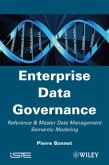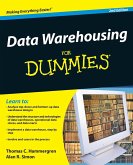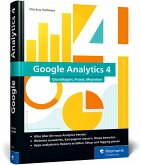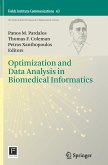The rapid uncontrolled growth of classification methods in DNA microarray studies has resulted in a body of information scattered throughout literature, numerous conference proceedings, and others. This book brings together many of the unsupervised and supervised classification methods now dispersed in the literature. It breaks away from traditional statistical methods by providing chapters on newer machine-learning approaches such as fuzzy methods, artificial neural networks, evolutionary-based genetic algorithms, support vector machines, and swarm intelligence involving particle swarm optimization and ant colony optimization.
Wide coverage of traditional unsupervised and supervised methods and newer contemporary approaches that help researchers handle the rapid growth of classification methods in DNA microarray studies
Proliferating classification methods in DNA microarray studies have resulted in a body of information scattered throughout literature, conference proceedings, and elsewhere. This book unites many of these classification methods in a single volume. In addition to traditional statistical methods, it covers newer machine-learning approaches such as fuzzy methods, artificial neural networks, evolutionary-based genetic algorithms, support vector machines, swarm intelligence involving particle swarm optimization, and more.
Classification Analysis of DNA Microarrays provides highly detailed pseudo-code and rich, graphical programming features, plus ready-to-run source code. Along with primary methods that include traditional and contemporary classification, it offers supplementary tools and data preparation routines for standardization and fuzzification; dimensional reduction via crisp and fuzzy c-means, PCA, and non-linear manifold learning; and computational linguistics via text analytics and n-gram analysis, recursive feature extraction during ANN, kernel-based methods, ensemble classifier fusion.
This powerful new resource:
Provides information on the use of classification analysis for DNA microarrays used for large-scale high-throughput transcriptional studies
Serves as a historical repository of general use supervised classification methods as well as newer contemporary methods
Brings the reader quickly up to speed on the various classification methods by implementing the programming pseudo-code and source code provided in the book
Describes implementation methods that help shorten discovery times
Classification Analysis of DNA Microarrays is useful for professionals and graduate students in computer science, bioinformatics, biostatistics, systems biology, and many related fields.
Wide coverage of traditional unsupervised and supervised methods and newer contemporary approaches that help researchers handle the rapid growth of classification methods in DNA microarray studies
Proliferating classification methods in DNA microarray studies have resulted in a body of information scattered throughout literature, conference proceedings, and elsewhere. This book unites many of these classification methods in a single volume. In addition to traditional statistical methods, it covers newer machine-learning approaches such as fuzzy methods, artificial neural networks, evolutionary-based genetic algorithms, support vector machines, swarm intelligence involving particle swarm optimization, and more.
Classification Analysis of DNA Microarrays provides highly detailed pseudo-code and rich, graphical programming features, plus ready-to-run source code. Along with primary methods that include traditional and contemporary classification, it offers supplementary tools and data preparation routines for standardization and fuzzification; dimensional reduction via crisp and fuzzy c-means, PCA, and non-linear manifold learning; and computational linguistics via text analytics and n-gram analysis, recursive feature extraction during ANN, kernel-based methods, ensemble classifier fusion.
This powerful new resource:
Provides information on the use of classification analysis for DNA microarrays used for large-scale high-throughput transcriptional studies
Serves as a historical repository of general use supervised classification methods as well as newer contemporary methods
Brings the reader quickly up to speed on the various classification methods by implementing the programming pseudo-code and source code provided in the book
Describes implementation methods that help shorten discovery times
Classification Analysis of DNA Microarrays is useful for professionals and graduate students in computer science, bioinformatics, biostatistics, systems biology, and many related fields.








